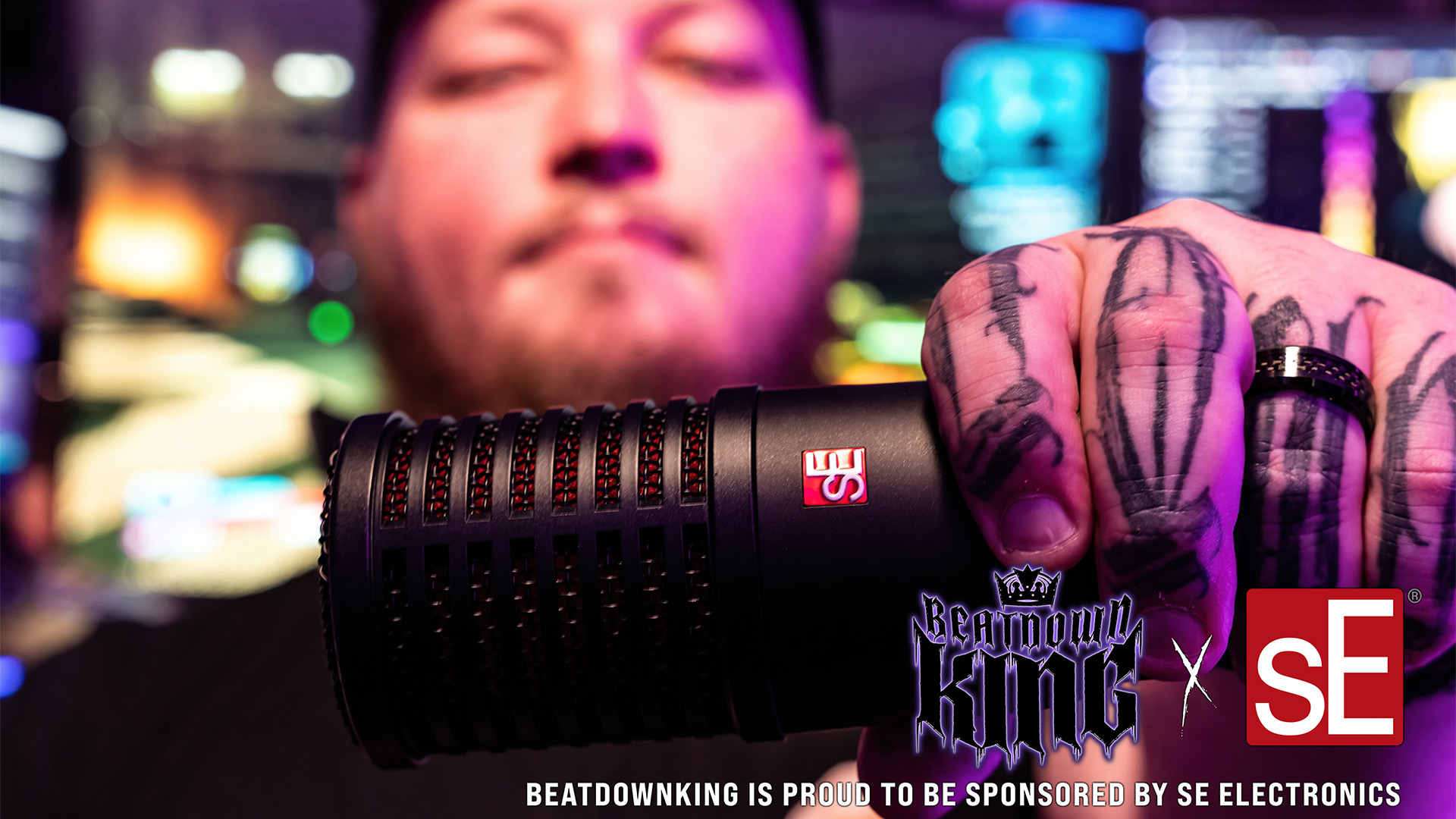Small Space, Big Sound: Setting Up a One-Device Home Studio
A full-scale at-home studio is the dream, but so many of us just don’t have the space. Fortunately, great sound doesn’t need a dedicated room; it just needs the right setup.
That’s where a one-device studio comes in. It’s the ideal way of keeping things simple and using gear that does exactly what you need it to.
Your computer is your studio desk, but the mic you plug into it? That’s the studio. No overcomplication. Just you, your sound, and the gear that gets it done.
What Is a One-Device Studio?
A one-device studio is a recording setup built around a single, hard-working piece of gear, and that’s usually a USB microphone. These mics are designed to connect straight to your computer or tablet without needing extra components like an audio interface, mixer, or external power.
Many USB microphones include built-in headphone monitoring and gain control, making them ideal for creators who want a fast, clean way to get started. Just plug it in, open your DAW (Digital Audio Workstation), and you’re ready to go.
Most creators already have a go-to DAW, whether it’s GarageBand, Audacity, or something more advanced. Once you’re set up, there are easy ways to keep things running smoothly and maximize your DAW performance. Closing background apps, adjusting your buffer size, and fine-tuning your system settings can all help you stay focused on the creative work.
Why One Device Might Be All You Need
Keeping your setup simple has real benefits. It saves space, reduces your cable management, and makes it easier to focus on recording instead of dealing with tech issues. If you’re working in a small or shared space, having less gear also means you can move things around easily, pack up quickly, or switch rooms without any hassle.
The sE NEOM USB microphone is a great example. It’s made for creators who want clear, professional sound without all the extra gear. You get built-in controls, easy plug-and-play setup, and real-time headphone monitoring. Whether you’re recording vocals, podcasting, livestreaming, or doing voiceovers, it performs reliably, even in rooms that aren’t acoustically treated. NEOM also works with iPhone (additional cable required), Android, Windows and Mac, making it a versatile home or on the go option.
If you already have an audio interface or want a bit more control, a dynamic mic like sE’s Dynacaster DCM series is another solid option. It’s great at rejecting background noise and has a tight, broadcast-style sound. Just remember, dynamic mics with XLR connections will need a couple of extra pieces to get going.
Making Your Space Sound Better (Without Renovating)
Even the best mic needs a little help from its surroundings. Most rooms, especially bedrooms, living rooms, and kitchens, weren’t designed for recording, so sound tends to bounce off hard surfaces and create unwanted echo or reverb.
sE Electronics solved this problem by inventing the Reflexion Filter in 2006. This portable, effective acoustic treatment mounts directly behind your mic and helps block those room reflections before they reach the capsule, resulting in cleaner, more focused sound.
Options like the RF-X and RF PRO are lightweight and easy to move around, making them ideal for anyone recording in a shared or temporary space. Just mount one to a compact stand, record your take, and pack it away when you’re done.
Pop filters are another smart add-on. They help soften plosive sounds, like the sharp bursts of air from “p” and “b” sounds that can distort your audio. sE’s dual-layer metal filters are compact, effective, and easy to clamp onto your mic stand. They might not be the most exciting piece of gear, but they quietly do their job and make your recordings sound noticeably cleaner.
Small Setup, Big Possibilities
A one-device setup makes it easier to bring your ideas to life. With just a mic, a computer, and a few smart accessories, you can create content that sounds polished and professional from just about anywhere.
You can record podcasts, vocals, acoustic instruments, voiceovers, or livestreams, all with a single microphone. Since everything is kept simple, your setup stays easy to manage, and switching rooms for a quieter spot is no problem, and packing it away between sessions only takes a few minutes. This kind of flexibility is a real advantage, especially if you’re working in a small apartment or shared space, or you’re regularly recording on the road.
More Ways to Improve a Small-Space Setup
A few practical touches can take your one-device studio to the next level, starting with mic placement.
Ideally, your mic should sit just off-center from your mouth and be angled slightly to reduce harshness. Try not to place it too close to walls or corners, especially if the space isn’t treated. If that’s unavoidable, a reflection filter can make a big difference.
If you’re working at a desk, a low-profile boom arm or a sturdy desktop stand can help you get the mic in the right spot without adding clutter. Go for accessories that adjust easily, especially if you switch between sitting and standing, or between recording vocals and instruments.
Soft furnishings in the room can also help reduce reverb. Curtains, bookshelves, cushions, and rugs might not look like studio gear, but they do a surprising amount of acoustic work. If you’re recording near a window, close the curtains. Hardwood floors? Add a rug. These small choices add up.
A One-Device Studio That Works With You
A one-device studio saves you space and keeps your workflow smooth and your setup stress-free. Whether you’re recording in a small room, on the road, studying music, or just want something simpler, building around one great mic can make the whole process feel more creative and enjoyable.
What matters most is having tools that do more with less. A USB mic like the NEOM, combined with a few smart accessories like a Reflexion Filter and a pop filter, gets you there without the hassle or clutter.
